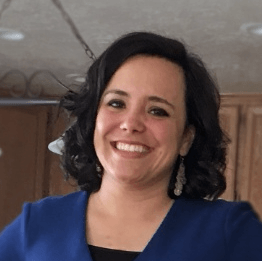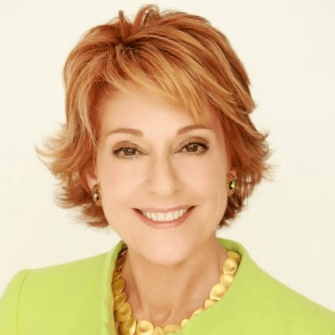The ABC's of Saving

Building your savings isn’t always easy, especially if you’ve never tried to do it. However, it’s very important, as it might be the only way to build your credit and protect yourself from the worst consequences of a surprise financial emergency, like predatory no credit check loans.
That’s why we spoke to several experts to create 26 saving tips, one for each letter of the English alphabet.
A is for Apps
Living in the future means we don’t have to rely on abacuses or bark with numbers written on it to manage our savings anymore. We have apps and computers with numbers written on them!
“One of my favorite savings tools is Digit.co, which analyzes your bank account and spending patterns,” Chad Parks, CEO of Ubiquity Retirement + Savings told us. “The software looks at your daily checking account balance, learns your spending habits, and automatically moves small funds to your Digit account to increase savings. The amounts vary depending on your checking balance and spending habits for that day/week/month. I notice they tend to pull smaller amounts between $5 and 10.”
B is for Budget
Before you start saving money, it’s important to figure out how much you’re actually spending and where it’s going.
“Top advice I give for new savers is knowledge,” advised John Savin, owner of Savin Wealth Management. “The simple concept of money in vs. money out will give monetary clarity. A budget listing where you spend will expose the holes in your finances, so you can lean up, and put more money back in your pocket. Cable, happy hours, dining out, throwing out groceries, shopping sprees, pet outfits, etc, are all areas to give a hard look at and trim back. You'd be shocked at how many thousands a year you can free up to save.”
C is for Cutting back
Once you’ve made your budget, it’s time to figure out where you can start shrinking it. One of the most obvious places to look is food, but we’ll cover that when we get to F and L. Coffee is another big place you can cut back. Obviously making your own is better than buying, but if you don’t have time to make your own, you can still be a smart saver at the coffee shop. You might like your latte, but getting a black coffee and adding the sugar and milk yourself can save you a few bucks each day which will add up quickly.
And it turns out a screen saver isn’t just something that appears on your computer screen. It’s also something you can be! “Cut the cord on your streaming sites’ bill,” advised Deborah Sweeney, CEO of MyCorporation.com. “You probably don’t need (or have enough time to watch) Netflix, Amazon Prime, HBO GO, and Hulu every month.”
D is for Deals
“Look for sales, deals, and coupons,” suggested Amber Westover, Research Assistant at the University of North Carolina at Greensboro. “Then, contribute the money you saved to your savings account.”
E is for Earn rewards (from properly using credit cards)
A lot of people think that credit cards keep you from properly building your savings. However, if used correctly, credit cards can help build up your credit score as well as your savings. One way is by building up your rewards. With many credit cards, you earn points every time you use them, and then you can use those points to purchase things you would have had to spend money on otherwise. Of course, you should still be paying your entire bill on time each month and you shouldn’t make purchases just to earn points. But if it’s something you were going to purchase anyway, the points will let you save in the future.
Bestselling author Pamela Yellen offered some outside-the-box advice on how to use your credit cards wisely: “Some financial advisors tell you to leave your cards at home to avoid temptation…I prefer to wrap my cards in my goals. Every time I take a card out, I see a picture or some words that represent a goal that's important to me. I get the opportunity to stop and decide whether what I'm about to purchase is more important than that goal.”
F is for Food
Eating out may be delicious, but it adds up fast. As Sweeney told us, “Do not go out to eat for lunch. Instead, plan your lunch in advance using weekly meal prep plans or by putting aside a little extra dinner for lunch the night before.”
G is for Growth
Growing your savings takes time and dedication, but the rewards will be worth it. It’s a marathon, not a sprint. It’s about making the right choices, over and over again, day after day, month after month, year after year. The more you do it, the more your savings will grow, and the more you’ll grow as a saver.
Yellen gave us an example of how learning about your own spending habits can keep you making the right choices: “Do you feel driven to buy extravagant gifts? When you have a rough day at work, do you crave some retail therapy to feel better? Are you triggered to overspend in a bookstore, hardware store, or swap meet? ‘Know thyself’ – and especially know your spending triggers so you can outwit them.”
H is for “Happies”
Spending makes you happy in the short term, but proper saving can make you happy in the long term.
“The Big Happy for most of us is having memorable experiences and being with the people we love,” Yellen advised. “That other stuff we chase? That's usually Little Happy – fleeting and not very fulfilling.”
I is for Interest
The interest you get from savings accounts may not be much, but every bit counts. And you’ll want to keep an eye on your credit score, because if it’s too low and you end up with a financial emergency, the interest from the loan you take out may wipe out whatever savings you had started building (if the emergency hasn’t done it already).
J is for Joint account
Do you and your significant other share an account? If so, you both need to be committed or else the saving plan won’t work.
K is for Keep up with your bills
“Pay your bills on time,” Sweeney warned. “By doing this, you can avoid penalties and interest — all of which accumulate if you don’t pay on time or don’t pay in full.”
Consistently paying your bills on time will also help your credit score which, as we mentioned above, will keep your savings from being totally wiped out by interest if you ever need a loan.
L is for Learn to cook
We already mentioned meal planning, but if you don’t know how to cook, you’ll probably need to work on that.
Don’t just take our word for it. Here’s what Sweeney said: “Learn to cook! Start making meals at home with the help of budget-friendly food blogs to help save money on eating out each week.
M is for Making comparisons
Sometimes putting in a little more legwork can lead to more savings, especially when it comes to bigger purchases. “Rather than falling for some marketer's value comparison, how about setting up your own?” suggested Yellen. “Put a price tag on some things you really enjoy and value.”
N is for Needs
Saving money means sometimes you can only purchase what you really need. As Yellen told us: “What do we really need? Stop and think about it and get clarity for yourself. And if you have children, teaching them the difference between needs and wants will empower them for life.”
O is for Open multiple accounts
One way to keep yourself from dipping into your savings account too soon is to make it harder to dip into.
“Use a different financial institution for your checking and savings accounts,” advised Westover. “If your savings account is more difficult to access (you have to wait a few business days for money to transfer to your checking account) you are less likely to make lavish impulse purchases. A built-in wait period will help you make premeditated financial choices. In addition, the ‘out of sight, out of mind’ principle will help you build savings. Make all regular purchases from your checking account and keep your savings account off limits.
P is for Picking your purchases
We’ve already said this a few different ways, but it’s important enough to be said again: put some thought into your purchases. Small, mindless purchases can add up quickly, so it’s important to think carefully about every expenditure.
Q is for Quotes
Do you have a repair you know you need to make on your house or car? Be sure to get multiple quotes so you can compare and find the best one. Obviously, if it’s an emergency you may not have much time, but if you can afford the time to find the more affordable option, your savings will thank you.
R is for Recurring expenses
Stuff like rent, electricity, gas, transportation fees, and any other regular, non-negotiable expense can dig into your savings. That’s why it’s always a good idea to find ways to save on these sorts of expenses, whether it’s shopping around for a cheaper electricity provider or changing your internet package.
S is for Saving
It’s what this whole list is about!
T is for Transfer
Setting up an automatic transfer into your savings account each month is a great way to guarantee money is deposited there.
Pay yourself first and set up an automatic transfer between your bank account to a separate savings account or investment account to save before you even have time to spend that money. You can start small and gradually increase your savings rate. The important part is to start.
Amber Westover also suggested an automatic transfer and used her own experience as an example: “The secret to saving is automation. Making the saving process easy and simple is the best way to be successful long-term. Schedule recurring automatic transfers, many banks include this feature. You can schedule transfers weekly, monthly, or even on a specific day of the month. I schedule savings transfers for the day after I receive my paycheck. Once the money is gone there is less temptation to spend it.”
U is for Unexpected expenses
Unexpected expenses will always come up. But if you have your savings built up, you’ll have a cushion when the worst happens. Ideally, you could have an emergency fund in addition to your savings fund so you don’t have to dip into your savings if something bad happens; but we know building up any savings at all can be difficult for many people.
V is for Vacation
A vacation is one of the many possible rewards diligent saving can reap.
W is for Wants
You have to separate your purchases into wants and needs. No reasonable person would expect you to give up all of your “wants,” but cutting them down can be a great step for raising your savings and can make the “wants” you still do get all the sweeter.
X is for Xylophone
Unless you’re a professional xylophone player, a xylophone is likely a want, rather than a need, so keep that in mind.
Y is for Years
Build your saving habits over many years. Your future self will thank you for it.
Z is for Zoos
Many zoos are either free or have free or discount days. It could be a good activity to do without negatively affecting your savings!
The bottom line
With all of these tips and your own dedication, we know you’ll become a savings master in no time!

Chad Parks is CEO and founder of Ubiquity Retirement + Savings (@ubiquitysavings), a flat-fee 401(k) provider that’s helped savers contribute over $2 billion towards their retirement since 1999. Chad started as a broker at Piper Jaffray. Driven by a desire to phase out the traditional and antiquated broker model, Chad left the company to obtain his CFP designation and launch his independent financial planning practice.

John Savin is the owner of Savin Wealth Management in Boca Raton, Florida.

Deborah Sweeney (@deborahsweeney) is the CEO of MyCorporation.com (@MyCorporation). MyCorporation is a leader in online legal filing services for entrepreneurs and businesses, providing start-up bundles that include corporation and LLC formation, registered agent, DBA, and trademark and copyright filing services. MyCorporation does all the work, making the business formation and maintenance quick and painless, so business owners can focus on what they do best.

Amber Westover is a Research Assistant at the University of North Carolina at Greensboro. She is passionate about learning and researching. Amber enjoys studying personal finances and sharing strategies to overcome debt.

Pamela Yellen (@PamelaYellen) is a financial investigator and the author of two New York Times best-selling books, including her latest,"The Bank on Yourself Revolution: Fire Your Banker, Bypass Wall Street, and Take Control of Your Own Financial Future."
Please note the below article contains links to external sites outside of OppU and Opportunity Financial, LLC. These sources, while vetted, are not affiliated with OppU. If you click on any of the links you will be sent to an external site with different terms and conditions that may differ from OppU’s policies. We recommend you do your own research before engaging in any products or services listed below. OppU is not a subject matter expert, nor does it assume responsibility if you decide to engage with any of these products or services.


